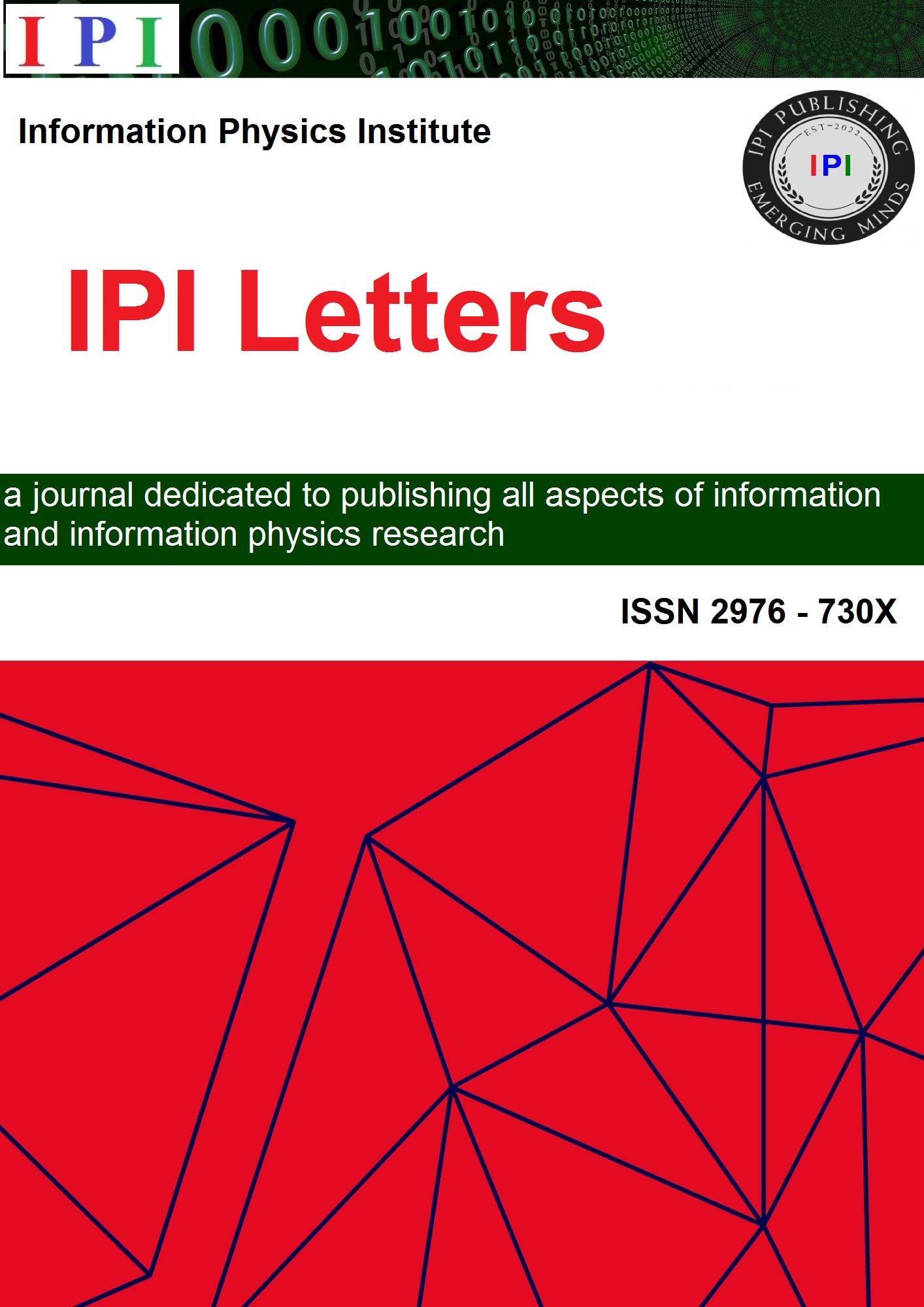Unification of Gravity and Light Using the Gertsenshtein Effect
DOI:
https://doi.org/10.59973/ipil.68Keywords:
Gertsenshtein effect, electromagnetic waves, gravitational waves, general relativity, magnetic field, spacetime interaction, wave conversion, unified forcesAbstract
This study examines the Gertsenshtein effect, which theorizes the conversion of electromagnetic waves into gravitational waves in the presence of a strong magnetic field. First proposed by Mark Gertsenshtein in 1962 and grounded in general relativity, this effect forms a bridge between electromagnetism and gravity, providing insights into the fundamental interactions within spacetime. Through the use of Maxwell's and Einstein's equations, we analyze the conditions necessary for this conversion and discuss its theoretical significance as well as the challenges in observation. Given the inherently weak nature of gravitational waves, their detection proves difficult; however, the Gertsenshtein effect holds the potential to shed light on cosmic events and the structure of the universe. This paper elucidates the physics of the effect, its astrophysical and cosmological implications, and the pathway toward experimental verification. It concludes that, in the context of the Gertsenshtein effect, gravity and light—similar to mass and energy in the special theory of relativity—are different manifestations of the same fundamental essence of the universe.
References
M. Gertsenshtein, “Wave Resonance of Light and Gravitational Waves,” Sov. Phys. JETP, vol. 14, pp. 84-85, 1962. Available: http://jetp.ac.ru/cgi-bin/e/index/e/14/1/p84?a=list.
A. Einstein, “Die Grundlage der allgemeinen Relativit¨atstheorie,” Annalen der Physik, 354(7), pp. 769–822, 1916. Available: https://onlinelibrary.wiley.com/doi/abs/10.1002/andp.19163540702. DOI: https://doi.org/10.1002/andp.19163540702
C.W. Misner, K.S. Thorne, and J.A. Wheeler, “Gravitation,” W.H. Freeman, San Francisco, 1973.
D. Boccaletti, V. De Sabbata, P. Fortini, and C. Gualdi, “Conversion of Photons into Gravitons and
Vice Versa in a Static Electromagnetic Field,” Il Nuovo Cimento B, vol. 70, pp. 129-146, 1970. Available: DOI: https://doi.org/10.1007/BF02710177
https://link.springer.com/article/10.1007/BF02710177.
R.P. Feynman, F.B. Morinigo, W.G. Wagner, and B. Hatfield, “Feynman Lectures on Gravitation,” Addison-Wesley, Reading, MA, 1995.
R. Penrose, “Gravitational Collapse and Space-Time Singularities,” Phys. Rev. Lett., vol. 14, pp. 57-59, 1965. Available: https://journals.aps.org/prl/abstract/10.1103/PhysRevLett.14.57. DOI: https://doi.org/10.1103/PhysRevLett.14.57
J.C. Maxwell, “A Dynamical Theory of the Electromagnetic Field,” Philosophical Transactions of the Royal Society of London, vol. 155, pp. 459-512, 1865. Available: https://www.jstor.org/stable/108885. DOI: https://doi.org/10.1098/rstl.1865.0008
J.D. Jackson, “Classical Electrodynamics,” 3rd ed., Wiley, New York, NY, 1999. DOI: https://doi.org/10.1119/1.19136
S.M. Carroll, “Spacetime and Geometry: An Introduction to General Relativity,” Addison Wesley, San Francisco, CA, 2004.
J. Weber, “General Relativity and Gravitational Waves,” Interscience Publishers, New York, 1961.
K.S. Thorne, “Gravitational Waves,” in Proceedings of the Snowmass 95 Summer Study on Particle and Nuclear Astrophysics and Cosmology, pp. 398-425, 1995.
B.P. Abbott et al. (LIGO Scientific Collaboration and Virgo Collaboration), “Observation of Gravitational Waves from a Binary Black Hole Merger,” Phys. Rev. Lett., vol. 116, no. 061102, 2016. Available: https://journals.aps.org/prl/abstract/10.1103/PhysRevLett.116.061102.
Rizzo, Alessandro. ”On a Heuristic Viewpoint Concerning the Conversion and Transformation of Sound into Light.” 2023. http://dx.doi.org/10.4236/jhepgc.2024.101026. DOI: https://doi.org/10.4236/jhepgc.2024.101026
Rizzo, Alessandro. ”The Golden Ratio Theorem: A Framework for Interchangeability and Self-Similarity in Complex Systems.” 2023. http://dx.doi.org/10.4236/apm.2023.139038. DOI: https://doi.org/10.4236/apm.2023.139038

Downloads
Published
Versions
- 2024-04-29 (2)
- 2024-04-29 (1)
How to Cite
Issue
Section
License
Copyright (c) 2024 Alessandro Rizzo

This work is licensed under a Creative Commons Attribution 4.0 International License.














